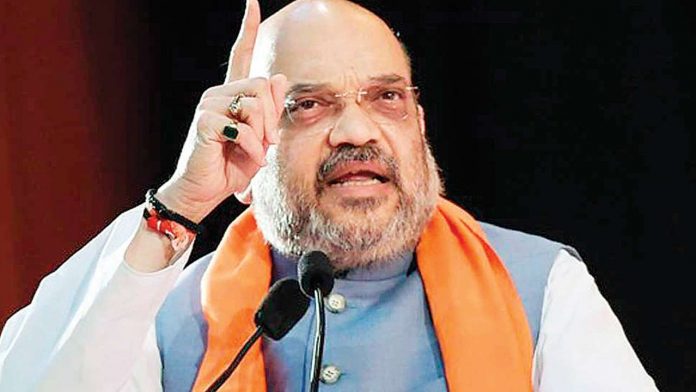India’s next census will be an electronic census or e-census, Union Home Minister Amit Shah said on Monday during his two-day visit to Assam.
“The next census, which has been delayed because of COVID, will be an e-Census… a hundred per cent perfect Census, based on which the country’s guide for the next 25 years will be fabricated,” Shah said while speaking at the initiation of Directorate of Census Operations (Assam) working in the Amingaon area in Guwahati. While the e-Census will have challenges, it will likewise have advantages, he added.
How might the e-Census work?
As indicated by Shah, the Census will be “more scientific, accurate and complex, with the help of modern techniques”.
With the presentation of the e-Census, 50 percent of the country’s populace will actually want to feed their information on a mobile application downloaded on their phones. The government is preparing new software for the e-Census.
“A person’s name will be added to the census upon entering the world. When they turn 18, the name will be included in the electoral roll and after death, the name will be deleted,” said Shah.
“We will connect birth and death registers to the Census… It means the Census will be updated naturally after every birth and death in the country,” he added.
The Census information can reflect demographic changes, economic planning, areas left behind in the development parameters, and social, semantic, and societal changes, as indicated by the home minister.
Shah said that different agencies would be involved in the e-Census and that processes like changing addresses would be smoother, reports The Indian Express.
Aside from online self-enumeration, home visits by the enumerators for collecting Census information will continue. Those meeting homes will likely be armed with tablets or smartphones that will let them enter data into an entrance directly, as indicated by media reports.
An online Census was first mentioned by Shah in September 2020. In February, Union finance minister Nirmala Sitharaman allocated a budget of Rs 3,786 crore for it.
What changes have been made to Census rules?
Last month, the government has notified certain amendments to Census rules to permit online self-enumeration in the next Census and National Population Register (NPR), a rundown of the “typical residents of the country”. As per the home service, “common residents” are those who have been residing in a neighborhood essentially the most recent a half year, or intend to remain in a specific area for the next a half year.
In a gazette notice, the Center amended Census Rules, 1990, to include “electronic structure” and “self-enumeration” in the schedule of questions to be asked during Census enumeration. The amendment has been inserted in clause C of Rule-2, which deals with definitions.
Clause C currently reads, “Census Schedule means the schedule containing questions referred to in sub-section (1) of section 8 of the Act, in paper structure or in an electronic structure and can be canvassed in the said modes including through self-enumeration.”
How was the Census conducted up until this point?
“We have taken the memorable decision to progress from a paper census to an e-census — while it could be complicated, assuming done well, it might simply be easier,” Shah said on Monday.
The paper Census involved government offcials going house to house, visiting every house and topping off structures, which were then transported to information processing centers for digitisation and investigation.
The Census provides detailed and authentic data on demography, economic action, literacy and education, lodging and household amenities, urbanization, fertility and mortality, scheduled castes and scheduled tribes, language, religion, movement, incapacity, and numerous other socio-social and demographic information.
When did India begin collecting Census?
Census is conducted under the arrangements of the Census Act 1948, and in India, this information is collected every 10 years.
The primary complete census of India was conducted in 1830 by Henry Walter in Dacca (presently Dhaka). In this Census, the measurements of the populace with sex, expansive age bunch, and the houses with their amenities were collected, as per a report in India Today.
The main modern census was conducted between 1865 and 1872 the nation over. The efforts culminated in 1872 and hence the year is dubbed the year of the primary populace Census.
The last Census was conducted in 2011 and was conducted in two phases: the lodging census and the populace census. This was fifteenth National Census of the country since 1872 and the seventh after Independence.
When will the next Census be conducted?
The Census was scheduled to begin in March 2020 with the house-posting phase and NPR enumeration, followed by the populace Census, however was deferred indefinitely because of the COVID-19 pandemic. This is the first time it has been delayed in Quite a while’s set of experiences.
While there is no lucidity on when the Census will begin, the Union government has directed the states not to alter the boundaries of the regions and other common and police units until June 2022, a compulsory requirement three months before the enumeration exercise.


